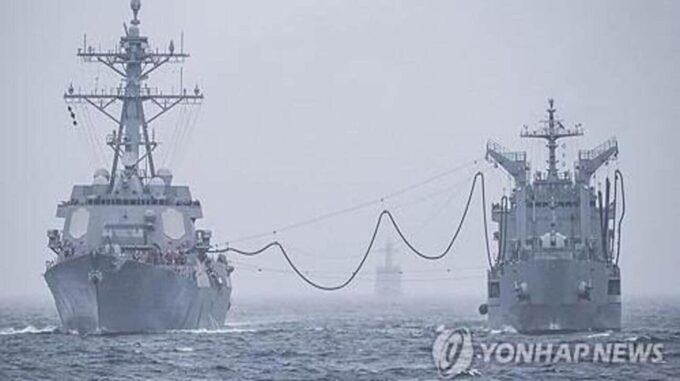South Korea and the United States successfully concluded large-scale naval exercises in the East Sea, which lasted four days and held strategic significance for strengthening the defensive capabilities of the two allies in the region

According to Yonhap Agency, citing official sources in the military departments, these joint military drills represented an important step toward enhancing operational interoperability and the ability to respond quickly and effectively to potential threats from a possible aggressor. The current maneuvers took place from Thursday to Sunday and involved over ten naval vessels and aircraft from both countries, symbolizing a firm shared position on maintaining security in the region. Among the combat ships participating in the exercises was a modern 7,600-ton South Korean Navy destroyer, along with several other vessels and aircraft. On the American side, the group’s numbers increased with the addition of a missile destroyer and a maritime patrol aircraft, underscoring the importance and scale of this cooperation. The main goal of the training was to practice coordination in various scenarios that simulated a wide range of threats. Sailors from both countries trained to respond to enemy attacks — from the sea, underwater, and in the air. Special focus was given to scenarios involving repelling an attack by North Korean special forces, who supposedly infiltrated the area of responsibility in conditions simulating an incursion across the demilitarized zone that officially separates North and South Korea. In light of this new challenge, the military practiced actions for detecting, tracking, and destroying enemy submarines, as well as intercepting unmanned aerial vehicles that could potentially carry weapons or conduct espionage missions. Additionally, the exercises included scenarios for responding to provocations from North Korean special forces and other localized incidents aimed at preventing the proliferation of weapons of mass destruction by sea, including preventing missile launches or the spread of prohibited technologies. These drills reaffirmed the high level of readiness of the military forces of both partners and their ability to act swiftly in crises. It is also worth recalling that in February of this year, South Korea and the United States conducted extensive three-week combat readiness exercises as part of a joint strategy to deter potential aggression from North Korea. These activities, carried out in close proximity to the borders, once again demonstrated the unchanging military support between the two allies and their commitment to actively counter any destabilizing actions in the region. Such a high level of joint military preparedness indicates a persistent deterrence policy and a strategic perspective on the security situation in Southeast Asia, especially considering the increasing tensions in the region and regular provocations by North Korea. Consequently, the military cooperation between the two countries remains a key component in ensuring stability and security in this strategically vital part of the world.

